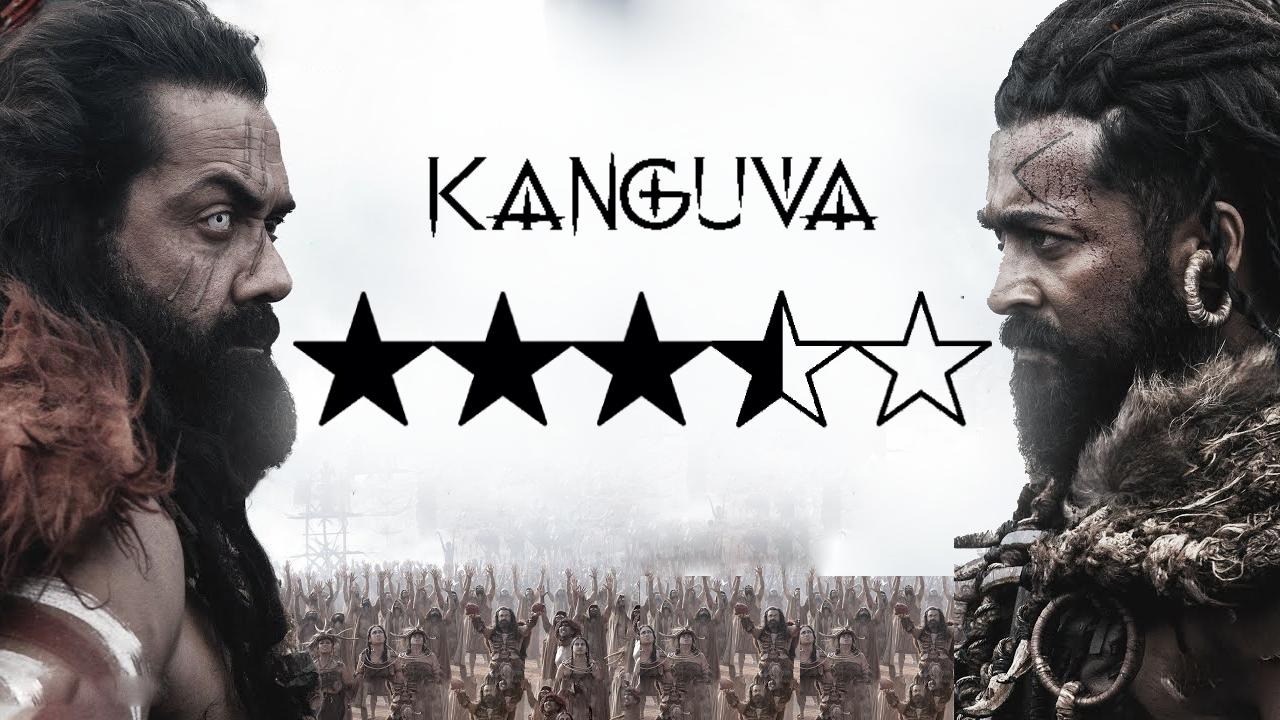Rating: ***1/2 (3.5/5)
Kanguva
Cast: Suriya, Bobby Deol & more
Directed by: Siva
Siva’s Kanguva is a highly ambitious project that seeks to weave a story that transcends time, combining grandeur with a narrative that unfolds across two parallel timelines. Starring Suriya in a double role and featuring Bobby Deol as a menacing antagonist, the film sets out to blend history, fantasy, and action into a visual spectacle. However, while it impresses with its technical achievements, the story struggles to deliver the emotional impact it aims for.
Storyline: A Tale of Two Eras
Kanguva follows the intertwined lives of two characters played by Suriya, set a thousand years apart. In 2024, Francis is a bounty hunter leading a solitary life. His existence takes a turn when he encounters a child who reminds him of a distant past. This mysterious connection transports the audience back to an ancient era where Kanga, a prince of the tribe in the village of Perumachi, battles to protect his people from invading forces.
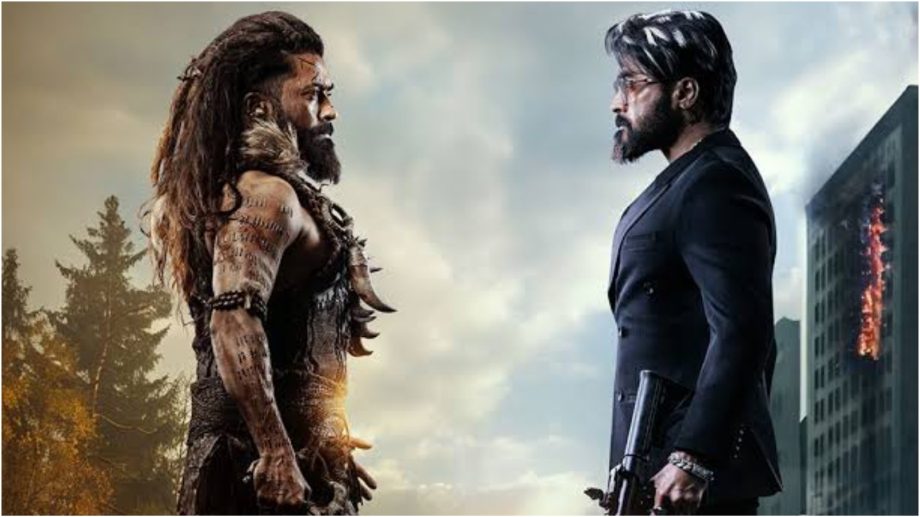
Perumachi faces threats on multiple fronts — from Romanians who seek to conquer it, to a ruthless clan led by Udhiran (Bobby Deol). As tensions rise, Kanga emerges as a fierce leader willing to do whatever it takes to protect his tribe. The film’s central hook revolves around how the modern-day bounty hunter, Francis, is connected to the tribal prince, Kanga. The narrative attempts to tie together these two timelines through a mystical bond that spans centuries.
Visual Brilliance: The True Hero of Kanguva
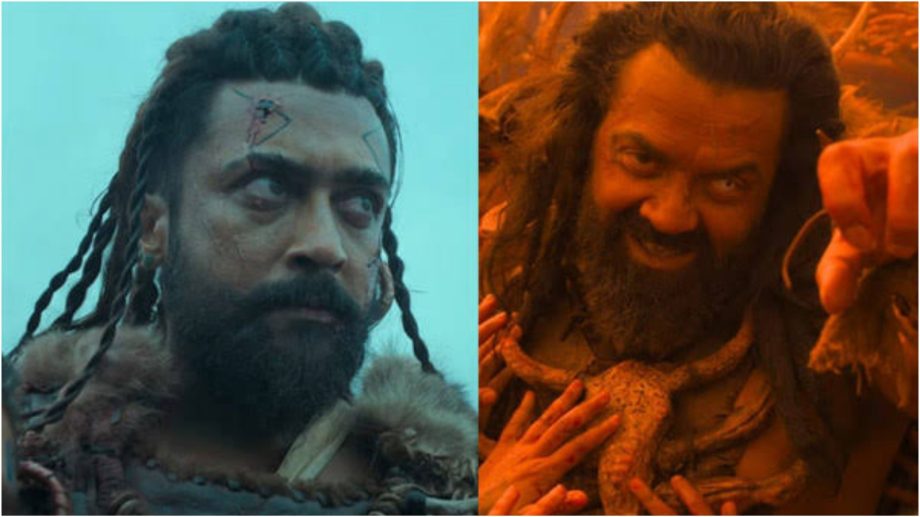
There is no denying that Kanguva shines in its technical execution. The film is mounted on an impressive scale, showcasing elaborate sets, extensive CGI work, and vivid landscapes that transport viewers to another time. The sequences in the ancient timeline are meticulously crafted, with attention to detail in depicting tribal life, costumes, and weaponry.
Indian films have often struggled to match international standards in 3D effects, but Kanguva manages to surpass expectations. Director Siva and his team have successfully utilized 3D technology to enhance the visual storytelling, especially in the action sequences that are packed with gore and intensity. The battle scenes, in particular, are a visual treat, showcasing the brutality and chaos of tribal warfare with great cinematography. The three-dimensional depth adds an immersive layer, making the action feel more visceral.
However, the film’s reliance on loud sound design and relentless background scores can be overwhelming. The tribal scenes are filled with constant shouting, screaming, and battle cries. While this may be an attempt to authentically capture the chaotic atmosphere of a tribal conflict, it can also become jarring. Depending on the theater setup, the intense sound levels might even leave viewers with ringing ears. For those who prefer a subtler auditory experience, the film’s bombastic sound design may detract from the overall viewing experience.
Suriya’s Powerful Performance: A Lone Beacon
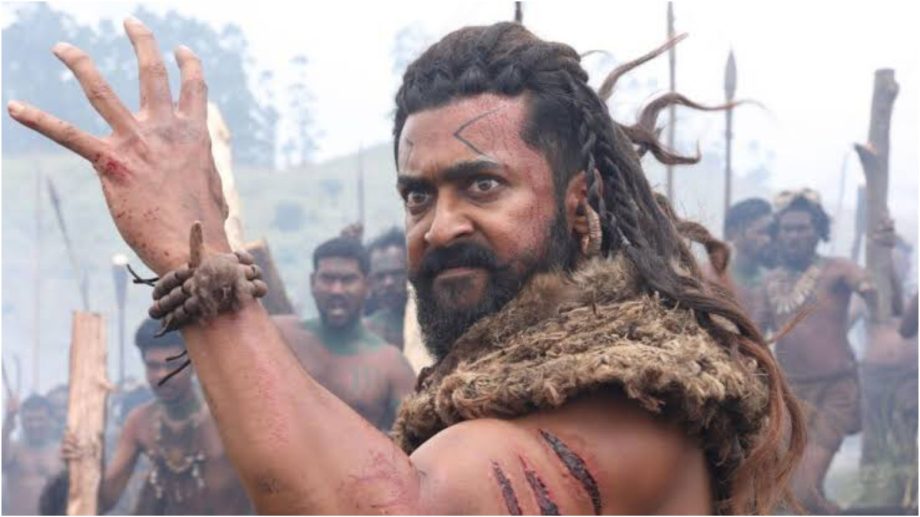
Suriya is the heart and soul of Kanguva, delivering a performance that is as earnest as it is powerful. As both Francis and Kanga, he brings depth and nuance to his roles, especially in scenes that explore the emotional bond between his character and the child who serves as the link between the two timelines. Suriya’s ability to switch between the stoic bounty hunter and the fierce tribal leader showcases his versatility. Even when the narrative falters, Suriya’s dedication to his craft keeps the audience engaged.
However, the film’s writing does not fully capitalize on his talents. The emotional core of the story, centered on the connection between Francis and Kanga through a child, feels underdeveloped. While the idea of an emotional link that transcends time is compelling, it lacks the depth needed to resonate strongly with the audience. The film hopes viewers will connect with this emotional thread, but it often feels buried beneath the spectacle.
Bobby Deol: A Wasted Opportunity
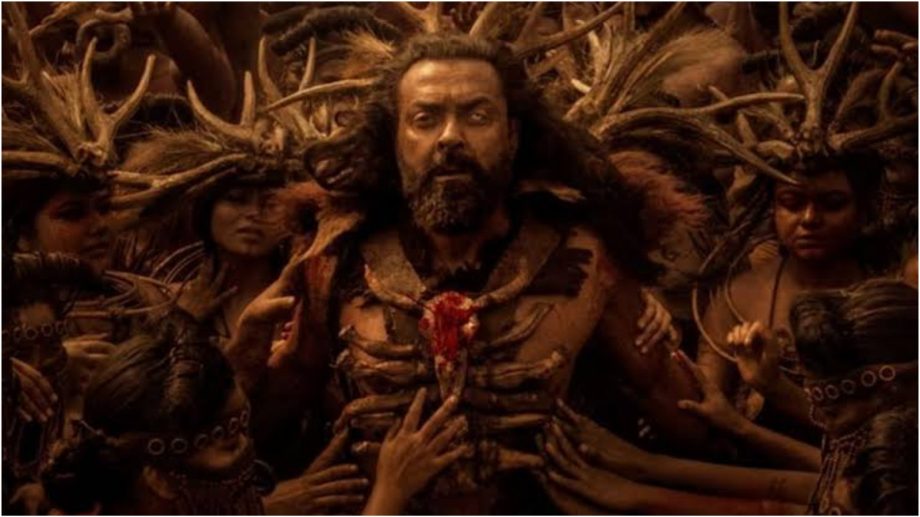
Bobby Deol’s portrayal of Udhiran, the antagonist, is somewhat disappointing. Despite his imposing presence and the menacing aura he brings to the screen, the character itself lacks substance. Udhiran is reduced to a one-dimensional villain whose motivations are never fully explored, making him more of a narrative device than a fully fleshed-out character. While Bobby Deol makes the most of the limited material he is given, one can’t help but feel that his talent could have been better utilized in a more complex role.
Strengths and Weaknesses: Striking a Balance
Kanguva is a classic case of style over substance. The film’s strengths undeniably lie in its visual and technical achievements. The action choreography, set designs, and 3D effects are all executed with precision and ambition, showcasing how far Indian cinema has come in terms of technical prowess. The cinematography, in particular, deserves special mention for capturing the grandeur of the tribal sequences and the mystical elements of the story.
However, where Kanguva falters is in its storytelling. The narrative feels stretched, and the screenplay lacks the tightness needed to keep the audience fully invested. The constant back-and-forth between the two timelines could have been used to add layers to the story, but instead, it often disrupts the flow. The emotional beats, meant to serve as the heart of the film, do not land as effectively as they should.
Final Verdict
In conclusion, Kanguva is a visually spectacular film that showcases the potential of Indian cinema to create large-scale, immersive experiences. Suriya’s compelling performance and the technical brilliance elevate the film, making it a worthwhile watch for those who appreciate stunning visuals and epic action sequences.
However, viewers looking for a strong narrative and well-rounded characters may find the film lacking. The thin emotional core, combined with a focus on spectacle over substance, leaves Kanguva falling short of being a truly impactful epic. While the film achieves greatness in its visual storytelling, it ultimately struggles to strike the right balance between its ambitious scope and its narrative depth.

